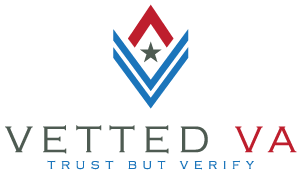Understanding the VA Loan Estimate
The loan estimate can be a daunting document. To better understand it, the document can be broken down into three pages.
Page 1 contains the general parameters of the loan:
- Loan terms (15 or 30 years)
- Loan Amount. The loan amount consists of the interest rate, and the principal interest rate. This does not include taxes, insurance, or HOA fees. Therefore, the monthly payment will be more.
- Fixed Rate – When the rate is locked it will not change. If the rate is not locked it will fluctuate with the market, moving up or down.
- Type of Loan (Conventional, VA, FHA).
VA loans have no prepayment penalties. You can pay off your mortgage early or make additional payments without fear of being penalized financially. Principal interests are broken down into 1 to 7 years and then 8 to 30 years. Typically, with VA loans, it’s just going to be 1 to 30 years. Closing costs might seem like a big scary number but that’s not actually cash-to-close, which is below it. Closing costs are total fees on the loan.
Usually there’s a fee worksheet where everything is broken out with a lump sum of closing costs. Make sure everything all adds up.
VA Loan Estimate Page 2 closing costs.
This usually consists of two columns. The left side of the page are the closing costs and the right side has other details, like escrow and interest. The closing costs are probably the most critical part of the loan estimate. A lot are common, like title insurance and appraisal fees. Many are heavily regulated, so there’s not much to worry about being overcharged. For example, C&P (Compensation and Pension) Claims.
If you’re being med-boarded, the fee can be exempted before discharge since you’ll get a rating before leaving the service. Take that paperwork with the rating to your loan officer who will submit it to the VA portal. Then they will manually exempt you from the fee based on your certificate of eligibility. If you are starting your application process after you’ve separated it’s going to take some time until your rating is approved. If you close on your mortgage during that time, the funding fee will be collected at closing.
Once your disability rating is granted you can go back to the regional loan center and get a refund. It’s a nice chunk of money. Since the average home cost is 385,000 a 2.1% funding fee would be $7,700.
Left Side
On the left side column, you will see Box A (Origination Charges), Box B (Services You Cannot Shop For), and Box C (Services You Can Shop For). Box A is where lenders are shopping for loan officers. You want to look at the interest rate and Box A. You might see one with an interest rate and no fees and another with a lower rate and more fees. However, the interest rate doesn’t tell the whole story. You’ll have to compare the fees involved.
Box B lists the costs of the application fee, the underwriting fee, and the originator compensation and lender fees. The appraisal is set by the VA and you can’t choose your appraiser or even the company. That’s why it’s in Box B since it’s set and standardized and regulated. The buyer can declare who they’re going to use for title and escrow, but there are so few title and escrow companies it isn’t going to differ too much. It comes down to follow-up and communication. If you don’t like the prices of title and escrow, you’re better off complaining to your congressman. If you’re shopping around, Box C is the one to mainly be looking at.
Right Side
The right column will be the same no matter what loan officer you’ll be working with. But you’ll still want to look at them closely since some lenders will try and make their costs look lower and can vary by state. The lender’s title insurance is going to be required. Both protect either you or the lender in the event something happens in the future with the title. For example, this can be a deed that was recorded that wasn’t caught in the original title search or if someone makes a claim on the property. These are things that do happen and can be very bad and expensive, so insurance is usually recommended.
This is a one-time fee. If you refinance, you will have to pay a lender’s title insurance again, but not owner’s title insurance. Some have lender credits but have a lot of extra fees. You need to look at those numbers and compare them. There is a good consumer finance CFPB put out a loan estimate guide which breaks this down point by point. It’s a great resource: https://www.consumerfinance.gov/complaint
Please be aware that the process gets trickier when doing a “By Owner” sale.
VA Loan Estimate Page 3 Closing Cost
It’ll break down the total interest in five years and compare that to the principal that you would have paid off at the beginning of the mortgage. Most of the money goes to interest at this point. Over time the amount towards interest decreases and the amount towards the principal increases.
It also shows the APR (annual percentage rate) but not every lender has the same thing as an APR, so it can be an inaccurate way to compare loan estimates. A better way is to look at the percent on the first page and look at the fees, lender credits, and the total interest percentage over the life of the loan.
The way interest rates are calculated can vary from one institution to another. For example, you could have a quote from one loan officer that’s lower in costs because they have a large credit, but the APR is higher. It often throws people off.
Finally, there are some housekeeping and appraisal details. It also has the specifics about assuming a VA loan. This is when someone else takes over the loan they qualify for with the same terms as what was originally done. It also has the required homeowner’s insurance to protect you and the property. Mortgage insurance only protects the lender. That’s what’s great about the VA loan: it doesn’t require any mortgage insurance.
It also contains fees for late payments. Typically, there’s a fee if the payment is 15 days late which can cost $50 or $75. It won’t show up on your credit report since those are only reported after 30 days. It’s all based on the secondary market with mortgage-backed securities.
There’s not any lender that will service 100% of all your loan. It could just happen to fall into a bundle of loans that are being sold off.
The bottom line is that all the information on pages one and two are there to make good decisions. It’s still a bit confusing to many and not perfect, but it has improved a lot over the years and is laid out better than it used to be.





